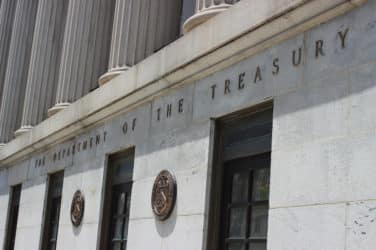It’s now less than 100 days until the final five US dollar LIBOR settings cease to be published on a representative basis, triggering the final switch to alternative reference rates for the remaining US-dollar-LIBOR-linked contracts. Given the scale of this phase of the transition, it’s critical that firms take the remaining time to ensure they understand and prepare for all the technical issues related to the switch for both cleared and non-cleared derivatives. For those that still have outstanding US dollar LIBOR derivatives, it’s not too late – but we would urge firms to act now.
This won’t be the first transition event for many firms – LIBOR settings linked to euro, sterling, Swiss franc and yen ceased publication or became non-representative at the end of 2021, along with two US dollar tenors. However, the volume of US dollar LIBOR derivatives far exceeds the amount linked to the other LIBOR currencies. While firms now have a tried-and-tested playbook, it means there is an extra level of complexity associated with this transition that requires close attention.
ISDA CEO @ScottOMalia has published a new derivatiViews blog on the countdown to the end of US dollar #LIBOR. Read the full article here https://t.co/73BNKEBhsk pic.twitter.com/6nRzgxl8Ve
— ISDA (@ISDA) March 27, 2023
First things first, firms should prepare for the planned conversions of cleared US dollar LIBOR trades, due to take place at CME Group on April 21 and at LCH in two tranches on April 22 and May 20. Together, these conversions will ensure the vast majority of outstanding US dollar LIBOR derivatives switch to SOFR-based trades before the final publication of US dollar LIBOR on June 30
We would also strongly urge any firm that hasn’t already done so to adhere to the ISDA 2020 IBOR Fallbacks Protocol. This will ensure a robust, viable back-up rate kicks in after June 30 for all non-cleared US dollar LIBOR derivatives conducted with other adhering counterparties. With more than 15,600 entities across 90 countries adhering to the protocol so far, this will significantly reduce the systemic risk associated with the transition.
As was the case in 2021, it seems many firms with outstanding non-cleared US dollar LIBOR exposures will rely on fallbacks to make the switch. That has some implications that firms will need to consider.
ISDA developed the fallbacks following multiple industry consultations and they are based on risk-free rates (RFRs) with adjustments to reflect the structural differences between interbank offered rates and RFRs such as SOFR. Specifically, the fallbacks for US dollar LIBOR comprise overnight SOFR compounded in arrears with a backward shift, meant to ensure payment amounts are known at least two days before they are due. A spread adjustment is then made, which reflects the difference between the relevant US dollar LIBOR tenor and SOFR compounded over that tenor, calculated using a historical median approach over a five-year lookback period (ending in March 2021, when the end dates for LIBOR were announced). Bloomberg Index Services Limited publishes the adjusted SOFR, the spread adjustment and the all-in fallback rate that will apply for non-cleared derivatives.
It’s important to recognize that use of a two-day backward shift in the published fallback rate and the inclusion of a spread adjustment differs from the standard SOFR overnight index swaps that dominate the US interest rate derivatives market today. SOFR overnight index swaps typically have a two-day payment lag without a spread adjustment and are calculated by one of the counterparties at the end of each period. The central counterparty conversions of cleared US dollar LIBOR derivatives will also generally result in SOFR overnight index swaps with these standard conventions to ensure the resulting transactions are fungible with existing cleared SOFR derivatives.
These variations can be managed and shouldn’t pose a problem, but firms do need to be aware of possible differences in conventions and make the necessary modifications to their systems and processes. Some market participants may choose to bilaterally negotiate changes to their contracts over time to increase consistency. Similar negotiations may also occur for derivatives hedging cash products that fall back to term SOFR, a separate benchmark based on transactions in the SOFR derivatives market.
After six years of hard work and cooperation between the public and private sectors, we’re nearly at the point where we can put LIBOR behind us. As we approach the final hurdle, maintaining momentum will be critical – that means adhering to the protocol for those firms that haven’t and finalizing arrangements to manage the switch. For our part, ISDA will continue to be on hand to provide market education and technical resources to support this critical transition.
Source: ISDA





